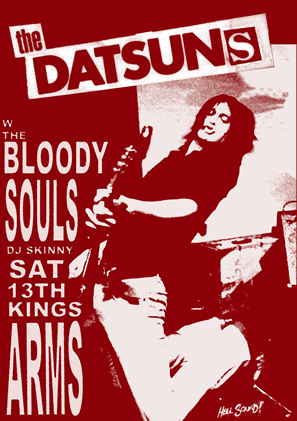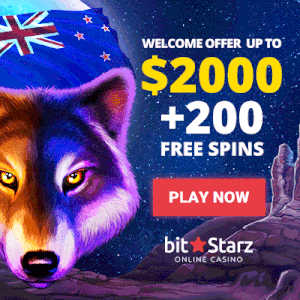The Datsuns are an iconic band that doesn’t require a lot of introduction to Kiwis who love their hard rock beats. The outstanding story of their journey from the Trinket winning the Battle of the Bands in 1999 to full-blown kiwi rock royalty has been told several times already.
After enrolling Christian as the main guitarist and winning band battles, they formed their label “Hell Squad Records” in 1997, on which their first tracks appear. A cover story in the British NME later, they’re the “next big thing” in the UK. After some tours, the band recorded and released their 2nd album, “Outta Sight – Outta Mind,” produced by Paul Jones, LedZeppelin’s bass player in 2004.
Quick Start Guide The Datsuns:
With more than a decade of experience under their belts, it isn’t surprising they develop an evening of well-designed delights mixing heavy drums and classic rock tones. The band has performed along with the likes of Marilyn Manson and even supported Metallica on their New Zealand tour leg that shows the type of league the group belongs to.
Rudolf de Borst, the top vocalist, provides a lot of variations to his vocal output, combining styles same to Axel Rose in some instances, Kurt Cobain and occasionally the screechiness Jack White in others. There’s a beautiful symbol sound to the drums which assists in developing a sense of drama like with every hit there is a crash to a heart.

Biography:
The Datsuns are a renowned garage-rock band from New Zealand. In 1995, while they were still at school, Matt Osment, Phil Buscke Somervell, and Dolf de Borst established a band known as Trinket. Christian Livingstone joined them in 1997.
They participated and won the 1999 89FM Battle of the Bands contest; by 2000 the group had changed their name to ‘The Datsuns.’ In August 2000 they issued their first track, “Super Gyration!” on seven-inch vinyl alone.
In July 2002, after featuring many times on the John Peel’ programme on the United Kingdom’s BBC Radio 1 and being praised as “the future of rock” by the British music press, the group signed with the V2 record label.
Ever since this hyper-kinetic quartet first landed among us, circa 2002, direct from the semi-rural New Zealand, they’ve been one of rock’s best live attractions. At any summer festival, thrill-seekers of each color will flock together from the new tent of the band, or their skate arena, or metal stage, or indeed their private drunken chaos, to witness Christian, Dolf, Ben, and Phil setting up their collective boot to the jams, producing their riff-mangling, speaker-stack-toppling electricity.
The band also took their name, rather self-deprecatingly, from the vehicle that’s emblematic of the “Jap crap” that floods the Antipodean market. As four teenagers from Cambridge, New Zealand, they did not feel like their visions warranted a name like The Rolls Royces or The Cadillacs. Jack White, motivated by a messy live show, he saw them play during the White Stripes tour of NZ, duly recruited them as the support act in the United States in early 2002.
Too metal for the garage purists, but also not straight-down-the-line adequately for the headbanging crowd, the group have been fighting for their turf on the global stages ever since. Equally, their fans defy classification.
The first track Arctic Monkeys ever played together, for instance, was Harmonic Generator off The Datsuns album.
Over the course of the past turbulent eight years, the band has released four albums, no mean feat in this lethargic modern age. During that period they circumnavigated the world several times, playing different shows in each city, town, and country which had a venue which could contain their raw power. This consistent touring has been vital in making sure that the band doesn’t lose public attention.
Career Highlights:
In 2003, they played Ozzfest on the main stage alongside the likes of Ozzy Osbourne, Marilyn Manson, Korn, and Disturbed. They also played the main stage of the 2009 and 2004 Big Day Out festival and opened for Metallica on their Australian tour in 2004; it didn’t go well.
Lars Ulrich, the Metallica drummer, had previously praised the band on the revival debut of Headbangers Ball before they played their video for “In Love.” Their 2nd album, Outta Sight, Outta Mind, was produced by John Paul Jones of Led Zeppelin. It didn’t get similar praise as the first one since critics offered it only a lukewarm response.
In October 2006, the band came back with the Smoke & Mirrors, heralded as a big return to form in New Zealand and Australia. The album met mostly positive reviews, though it wasn’t reviewed as extensively as their first two efforts. After the release of the 3rd album, Ben Cole replaced the drummer Matt Osment.
The band’s 5th studio album, entitled Death Rattle Boogie, was issued in October 2012. They recorded the album at Gutterview Recorders in Stockholm, with more work at the Roundhead Studios in New Zealand, and former Hellacopters frontman Nicke Andersson produced it.
To date, The Datsuns has released 6 albums and many songs, most of which have charted in the United Kingdom and/or New Zealand. They released their latest record; Deep Sleep, in October 2014.
Presently The Datsuns are not actively touring when we checked mid 2017.












